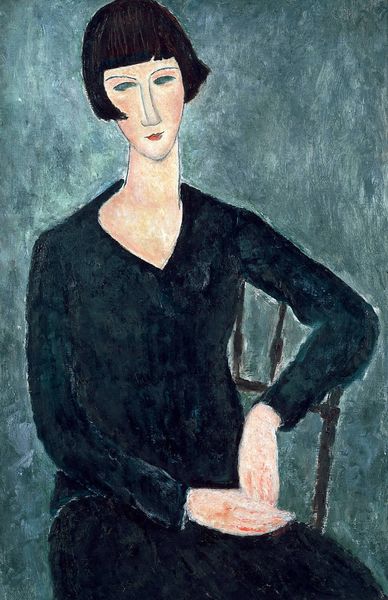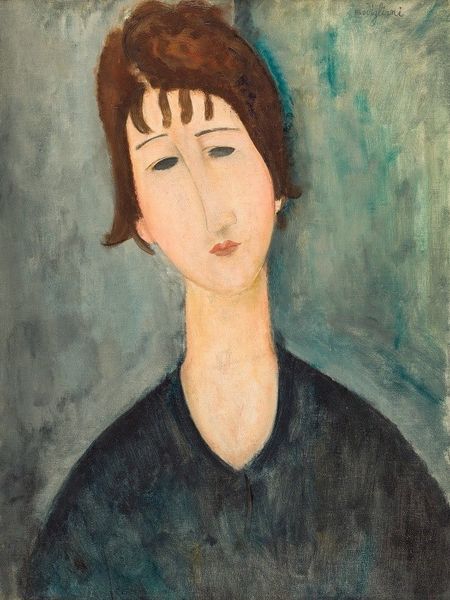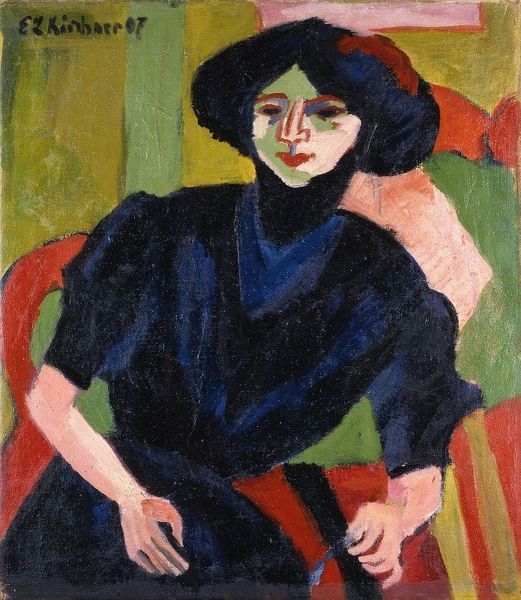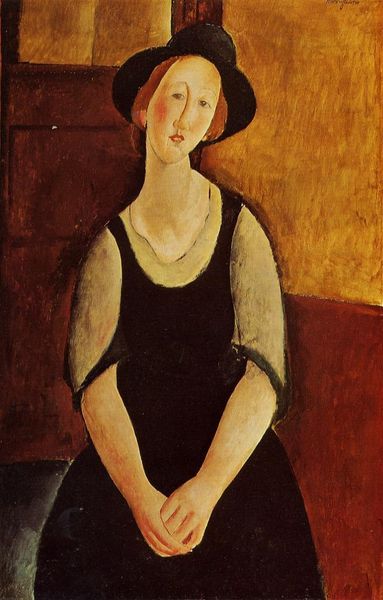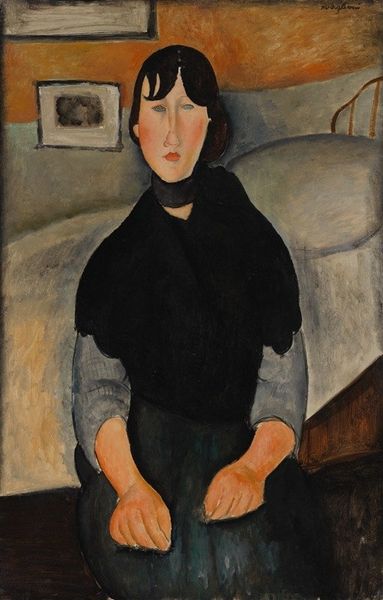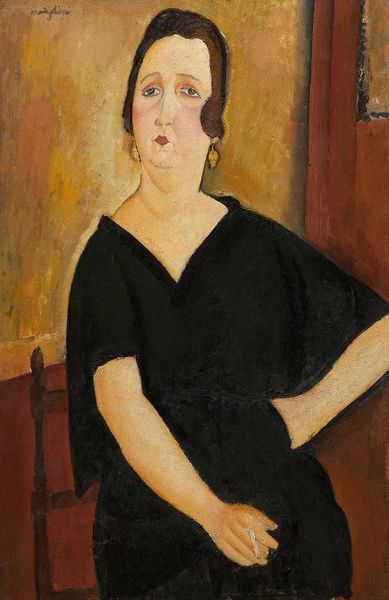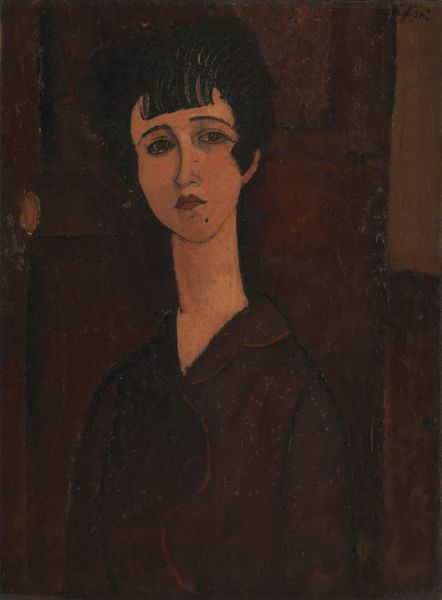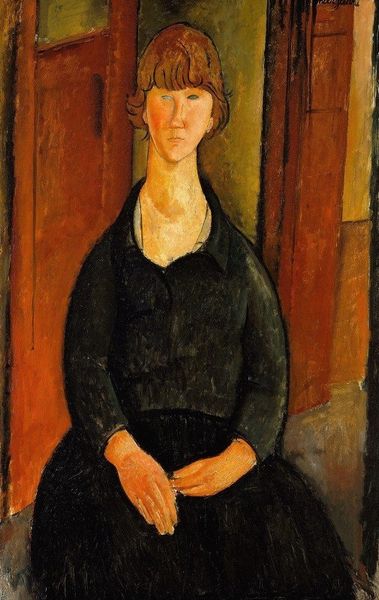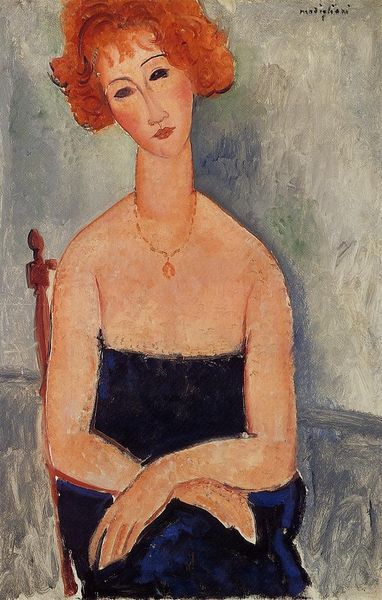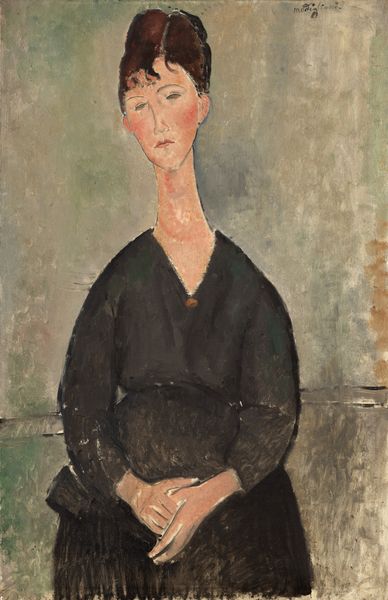
painting, oil-paint
#
portrait
#
painting
#
oil-paint
#
figuration
#
oil painting
#
intimism
#
modernism
Dimensions: 81 x 50 cm
Copyright: Public domain
Curator: Amedeo Modigliani’s “Portrait of Madame Reynouard,” painted in 1916, presents us with a striking figure in oil on canvas. The painting resides in a private collection, but let’s consider the details before us. Editor: My first impression is one of melancholy, maybe a touch of fatigue in her eyes. The color palette feels subdued, dominated by dark tones contrasted by the lighter skin tones. The composition is rather stark. Curator: Precisely. The work showcases Modigliani’s signature elongated forms and simplified planes. Notice the asymmetry subtly employed. Her pose, her gaze…it's a quiet subversion of traditional portraiture's power dynamics. It demands we acknowledge the female sitter as more than just decoration, doesn't it? Editor: Absolutely, and look at the materiality, how thin the layers of paint appear in areas and how little blending he does. It gives a feeling of quickness and urgency of production. Even the canvas, it's likely not top-grade. Modigliani's relationship to the art market and material accessibility informs the aesthetics of the piece as much as the desire to “modernize” the art of portraiture. Curator: That is an excellent point. We can’t detach this painting from its socio-economic environment. Modigliani himself lived a precarious existence, his identity shaped by the intersections of class, nationality, and artistic ambition during a turbulent historical period. The visible brushstrokes remind us of the physical labor involved, a conscious move away from the polished art promoted by the establishment. The lack of finish can almost read as an act of defiance. Editor: The social context during World War I surely added another layer to both Modigliani’s style and the reception of his artwork. The muted palette certainly hints to the social struggles taking place. One can also argue about class consciousness when using rougher and easier to come by, material such as a lower grade canvas. The simplification of form allowed for the maximization of material, when perhaps material availability was difficult due to the war. Curator: Viewing her as a symbol of resilience, embodying the complexities and challenges women navigated during that era is very possible. In “Portrait of Madame Reynouard” we see a Modern woman, unapologetic and assured. Editor: It definitely provides much needed nuance for the appreciation of materials that often go uncredited for their contributions and importance when the artwork itself is what gets all the attention. Thank you. Curator: Agreed, this portrait and discussion serves as a crucial reminder of the power of representation and its ties to the physical world, both past and present.
Comments
No comments
Be the first to comment and join the conversation on the ultimate creative platform.
